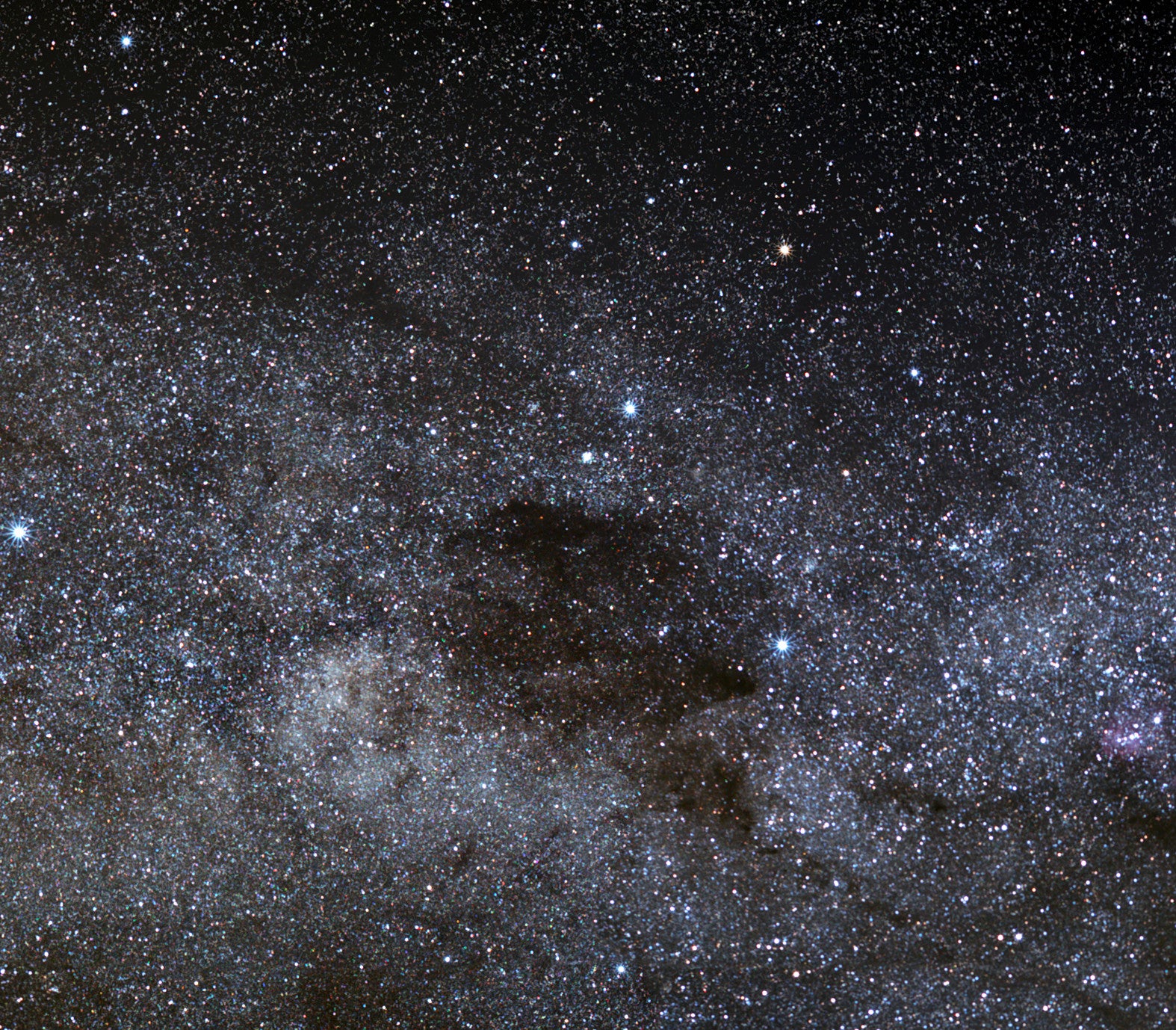
The naked-eye wonder of the Southern Cross is only overshadowed by its ink-black neighbor, the Coalsack Nebula. One of the most popular dark nebulae in the heavens, the Coalsack is roughly the same size and shape as Crux (about 5° by 7°), darkening the surrounding Milky Way like a black fog at the foot of the Cross. Probably known since humans first pondered the stars, this void appears in many legends, including those of Botswana’s Basarwa people, who envisioned it as the head of the dark Giraffe.
Sometimes referred to as the Black Magellanic Cloud, this nebula can seem like a vacancy left behind after its matter was used to form a nearby star cluster (in this case the Jewel Box). However, we now know that these dark areas are cold dusty clouds of molecular hydrogen gas that dim the light of whatever lurks behind them.
When we look upon the Coalsack, we are likely not seeing a single sheet of dust, but a conglomerate of two overlapping dark clouds at distances of 610 and 790 light-years. Stare steadily at it under a dark sky (especially through binoculars or a wide-field telescope) and you will see it consists of several charred ribs — parallel trails of darkness like celestial shadow bands. Use binoculars or a telescope to spy the 7th-magnitude open cluster NGC 4609 near 5th-magnitude BZ Crucis; the cluster is not associated with the Coalsack but lies some five times more distant.
By the way, the intensity of the Coalsack is created by a contrast illusion where dark nebulosity happens to be surrounded by a brilliant swath of Milky Way. Place the Coalsack among the stars of Cygnus and it would lose its luster.









